Content:
When it comes to bees, an associative array is involuntarily built up - an apiary, hives, a swarm of bees, honey and other beekeeping products. More advanced beekeepers know about the hierarchy of the bee swarm and admire, if not the intelligence, then the program that someone has put into the organization of the community of these hymenoptera. But few people know that more than 80% of all species of bees that exist on earth are solitary and do not live in bee communities. There are those who do not live in hives and tree hollows, but settle in earthen burrows. These are the land bees of Andrena, which are ubiquitous, but which few people know about.
Earth bees
Humanity knows so little about earth bees because few people managed to feast on their reserves. You never know Hymenoptera flies around. A person is not interested in them, because there is nothing to take from them. Unfortunately, human interest in nature is utilitarian. Nevertheless, there are more than one and a half thousand subspecies of these bees. Most of them are monovoltine, that is, they give only one offspring per year. And only a few of these species are bivoltine - they give two generations of offspring.
Earth bees differ from ordinary bees:
- smaller - females are from 1.8 to 2 cm, males are a couple of millimeters smaller.
- Greater furry - a thick fur cover on tergites and sternites of an earthen bee indicates that it does not live in a spacious warm hive, but underground in cramped circumstances.
- The color of the earthen bee also differs from domesticated bees - their wings are lilac, sometimes with a dark purple tint, the head is dark brown or almost black. The body can be painted in different colors - black, green, orange and even blue.
Do bees live in the ground
Ground bees do not create large colonies. They gravitate towards chamber life. The underground passages that they dig do not exceed 80 cm in length, but this is a whole branched network of semicircular tunnels, always ending in dead-end "cells" where larvae are deposited and honeycombs are built of wax, which are filled with honey.
Underground bees, like bees familiar to us, group around their queen, which founds a colony, finding a burrow abandoned by some rodent. First of all, she has to prepare the mink for laying the larvae. This requires:
- Build a mink out of loose earth soaked in your own saliva.
- Line the bottom of the mink with plant leaves.
- Lay out the first clutch of eggs.
- To get food for the larvae ourselves, until the young grow up, then the next clutch of larvae will be raised together.
- Put nectar in special chambers to feed the offspring.
Earth bees: how to get honey
All this must be done by the uterus before the end of the year. Because she lives only one year. The large females that are born in late summer are designed to create new swarms. After overwintering, they repeat the usual cycle again.
Honey is made in the same way as all underground honey bees:
- collecting nectar from honey plants;
- fermentation and filling in wax honeycombs:
- sealing the honeycomb with wax for the final maturation of honey.
- honeycombs in underground storage can be in the form of pyramids, ovals and circles.
In our latitudes, there are few hunters to get wild honey from the ground. Why such extremes when honey can be obtained in a civilized way? But you can find a lot of videos on the Internet, which show how to extract honey from a bee nest in the ground. As a rule, this is associated with numerous stings, since it is quite difficult to neutralize the bees that live in the ground. And to the point that they can be smoked out of underground tunnels with smoke, few hunters for a tasty treat come up with. And to tell the truth, this is a barbaric method - to turn the tunnels built with such difficulty in order to pick up all the preparations for the winter, collected by the underground bees for the whole season. Therefore, sympathy is not on the side of the hunters, but on the side of insects, desperately protecting their food. To bite such miners is a sacred thing. And how else can you get rid of uninvited guests.
Wild Earth Bee Sting (Andren's Bee)
Earth bees come in many different species. The most common ones are:
- Andrena clarkella is a bee very similar to the fluffy bumblebee. A distinctive feature of the Andrena Clarkell bee is the red and shaggy hind legs. Males do not look like their girlfriends, they are thin, long and have no sting, but they have a long mustache.
- Leaf cutter (Megachile sp) - this individual lines its nest with leaves, therefore, where it settled, you can often see leaves with a carved circle on the trees, or even a half of a cut leaf. This is the place where a single bee leaf cutter settles on the site. The female leaf cutter lives only 2 months, the male - a month. Having made a clutch of eggs and prepared honey for the young, the parents die, the young shoots develop independently.
- Woolly bees (Anthidium manicatum) - small, very beautiful bees take a fancy to the most fragrant inflorescences, big fans of botanical gardens, where the variety of flowering flora gives them a choice. They were called wool bats because they prepare nurseries for larvae from plant fibers, making them soft feather beds for babies. They don't dig holes themselves. They occupy abandoned burrows or settle under the bark of trees, in the trunks.
- Macropis (Macropis) - small hairy almost black bees. They settle in the ground, digging holes in the ground. The yellow eyes look like spotlights against a dark background. This bee is much smaller than an ordinary honey bee, its hind legs are shaggy, densely covered with black fibers. They fly out for nectar even at night.
These and all other species tend to bite, like all normal bees. Despite the unusual way of living, their bite does not have any increased toxicity. Like the sting of a common domesticated bee, it can cause anaphylactic shock in allergy sufferers.
What to do if an earth bee has bitten
Earth bees are not aggressive - like any self-respecting bee, it will fight for its own reserves, for minks that have been settled with such difficulty, for its own offspring, which is threatened with starvation, if you take out all the honey it has prepared. Therefore, it is worth considering whether it is necessary to destroy the burrows of earth bees. A description of the terrible death from the bite of small bees, perhaps, cannot be found, except for those cases when a person has an allergic shock.
Treatment of a bitten by an earthen bee comes down to the following activities:
- After the bite, you need to get rid of the sting. Because it is the sting that remains in the body. To do this, you need to pinch the protruding tip with your nails or tweezers and pull it out.
- The bite site must be disinfected. For these purposes, iodine, brilliant green, hydrogen peroxide or just ethyl alcohol will do.
- A properly treated bite can be smeared with antihistamine cream. This will prevent swelling from growing and reduce redness and pain.
- If the bitten person is allergic, an adrenaline injection should be given immediately to avoid anaphylactic shock.
- If the stings are numerous, it is not worth the risk and it is better to seek medical help, because it is difficult to predict how the body will react to bee venom injected many times.
- See a doctor if the bite is on the lip, larynx, or tongue. In this case, there is a high risk of edema of the upper respiratory tract, which can lead to suffocation.
Going into nature, you always need to foresee the likelihood of a bee or wasp sting and take with you everything that you may need in this case. You should also stock up on antihistamines and cream.
Is it necessary to fight with earth bees
Andrens often take a fancy to the garden plot and build their burrows there. They do not cause much concern, since they are not inclined to create large colonies. But the benefits of their stay are undoubted:
- These bees are great workers, they need to leave honey to their offspring, because many of the species of earth bees live very little. Therefore, any garden and vegetable garden will only benefit from such a neighborhood, pollination of plants will be more intensive and the yield of fruits and vegetables will increase significantly.
- They are bred specifically for pollination of alfalfa, as ordinary honey bees do not like this crop. Leaf cutters earth bees, on the contrary, simply adore this culture. Therefore, competent farmers build special baits for the andrena leaf cutter. Colonies of these bees do an excellent job of pollinating alfalfa.
- These bees are a real find for flower nurseries. They work all day to pollinate flowers, collecting nectar for their offspring.
Often, the owners of garden plots declare war on little workers. All means are used:
- A shovel that digs up the area where the andrens settled.
- Fill the minks with all kinds of filth.
- The entrances are plugged with rags soaked in gasoline and dichlorvos.
- Poisoned baits are hung in the garden.
And in this battle the man - "the king of nature" wins. It is no coincidence that many types of andrens are recorded in the Red Book.
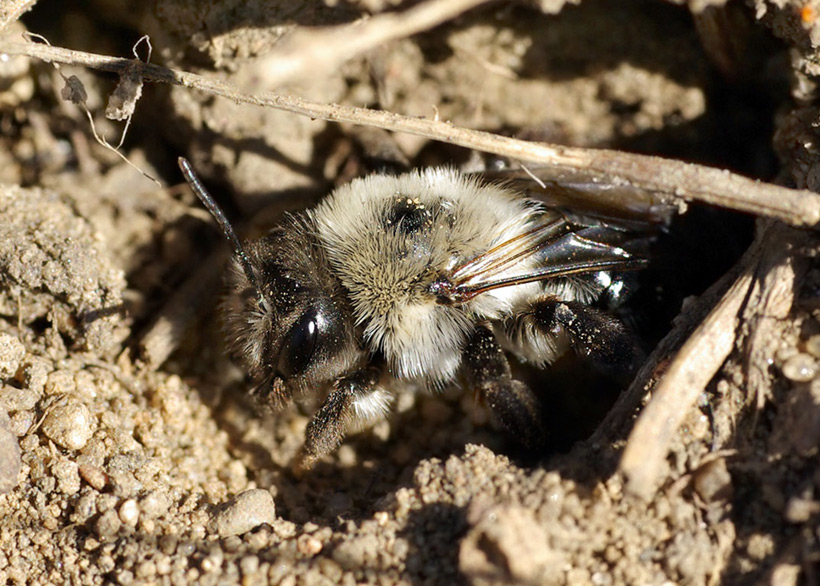
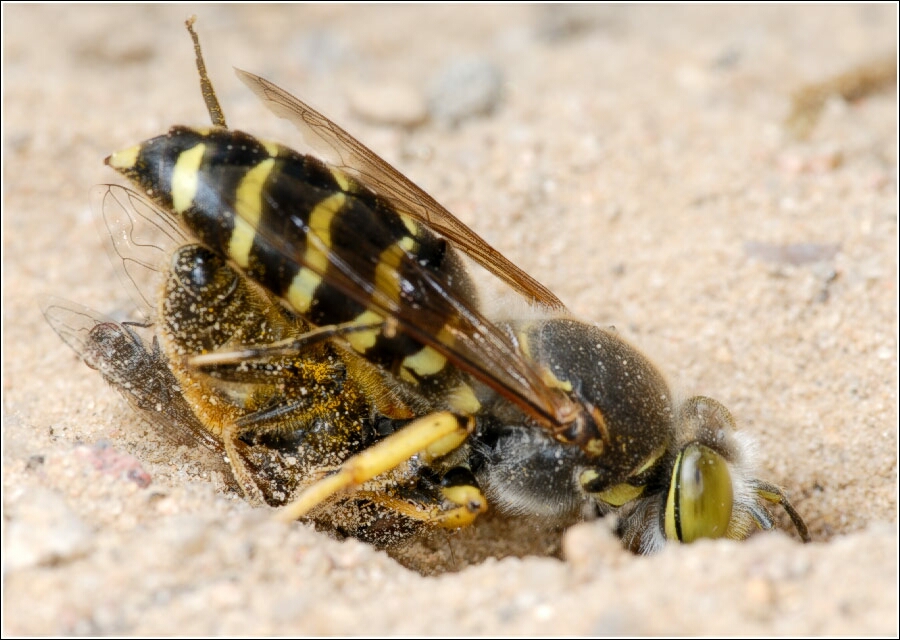

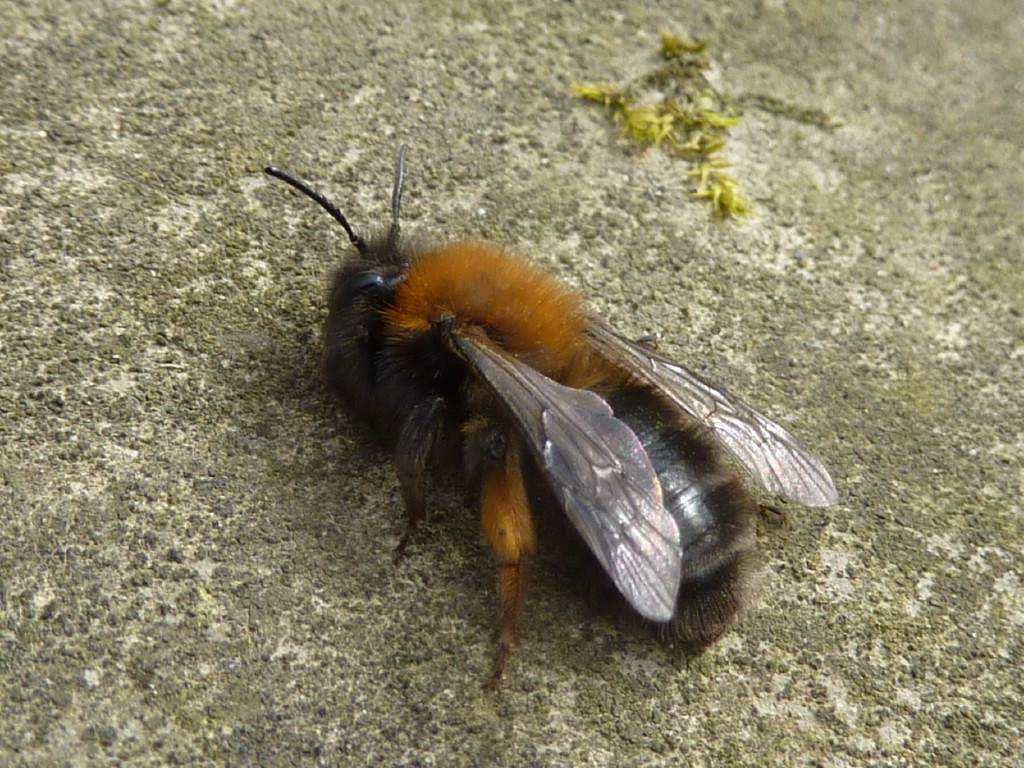

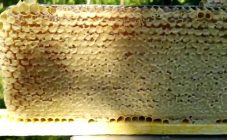
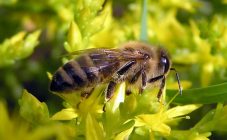
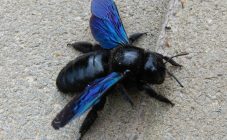
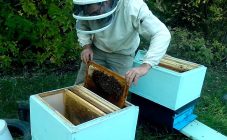
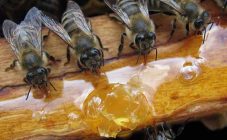
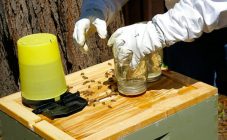







Love bees, without them the whole world will die !!!!! No miracle will save YOU if there are no bees - nature will die!
Love bees, this is the main chain in the conservation of nature on earth.